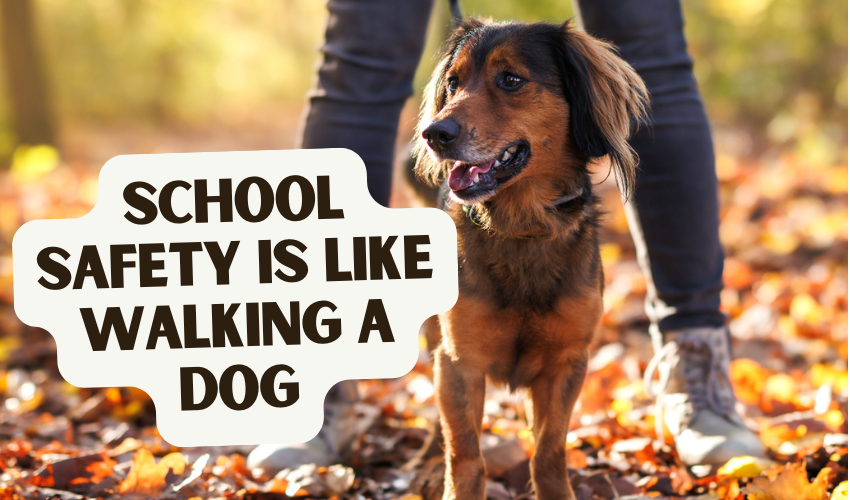- Register
- ☰
×
Register Today
Don Shomette
540-577-7200
don@donshomette.com
Safe & Loved
Coaching/Consulting
Trainings
Free Resources

I was out walking one day when I saw an older man with his dog on the path ahead of me. As we got closer, the dog went bonkers. Barking, lunging, rushing straight at me.
The man stopped walking.
He just kept yelling at the dog, “Stop! Get back! Stop!”
But he never shortened the expandable leash.
The dog kept coming and the leash kept running out.
I had to step off the path, into the grass, and make a wide circle around them. The dog followed me the whole way, just a few feet away from me, barking and nipping.
The man kept yelling. And the dog ignored him.
As I finally got far enough past them, I could hear the man still yelling behind me, frustrated and embarrassed, trying to get control. And the whole time I kept thinking—just retract the leash!
Instead, he let the problem run its course, hoping it would go away on its own.
We do this in schools.
Out of kindness or exhaustion, we stop correcting what needs to be corrected. We let certain behaviors go because the paperwork is exhausting, the consequences are limited, or we’re simply trying to keep the day moving.
And I understand that.
I really do.
Some days, it feels like no matter what you do, there’s no good option.
But there’s a heavy cost to it.
Staff members start to feel like they’re not supported or that the students causing the disruption get more consideration than they do. They feel like the path belongs to someone else and they’re the ones forced to step into the grass.
We often think that correcting behavior means ruining someone’s day.
But more often, it saves the day for everyone.
70% of school attackers are current or former students.
100% of them have teachers.
And those teachers are your most observant, most caring, most connected line of defense and they are constantly watching, noticing, and making a judgment.
Should I report what I see?
Is it worth me saying something?
Does anything change when I do?
If the answer becomes no, then your safety, your culture, and your students’ chances for success have all taken a terrible hit.
Like the old man walking his dog—he didn’t need to be perfect.
But he did need to try.
Just a little effort. Just a little proof that he was willing to lead.
And maybe the whole thing would’ve gone differently.
I’m certain his day would have been better.
My walk would have been better. Even the dog would have been happier because I would have stopped and petted him.
Leadership is both a burden and a privilege. And school safety is like walking a dog. You don’t have to be flawless. Everyone understands that somethings are out of your control. But people are watching and they need to feel safe.
If your staff begins to believe that nothing is going to happen if they report a behavior then they will stop reporting.
The moment that happens, your vulnerability to violence skyrockets.

Join the Safe & Loved Community and get more tips